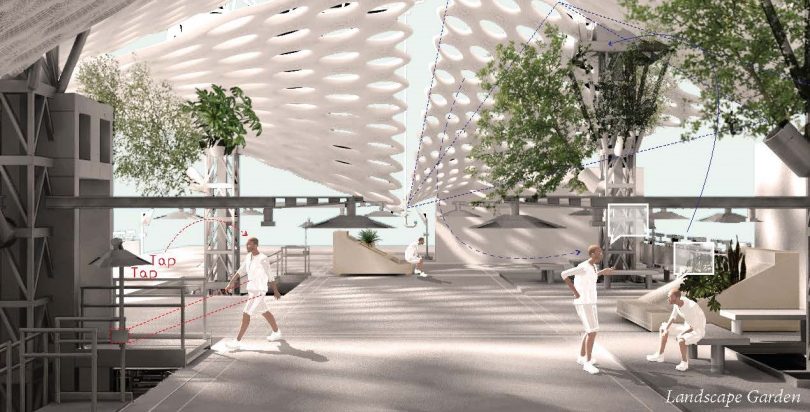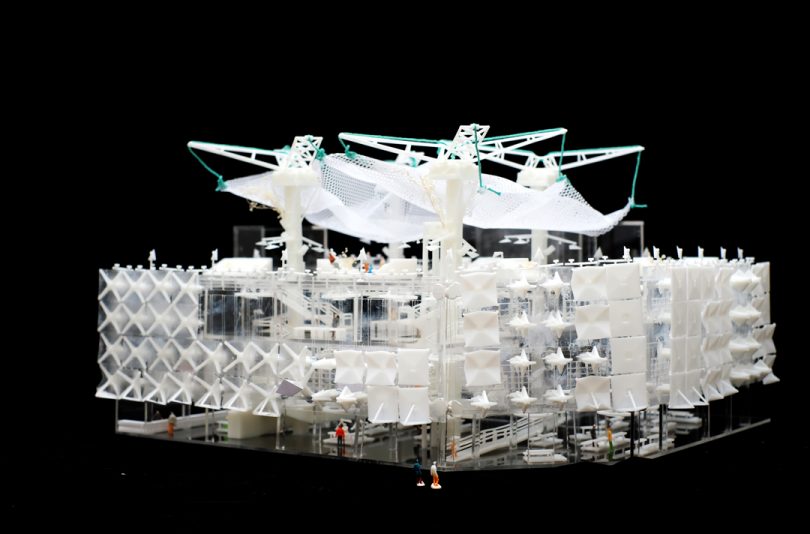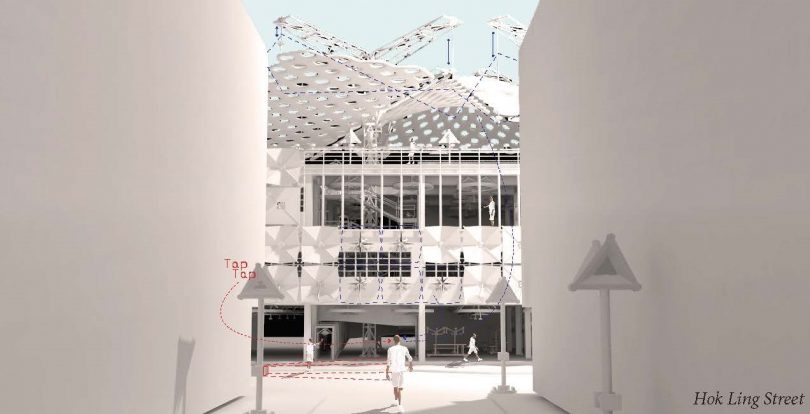The project tries to explore the symbiotic relationship between humans, environment, and technology as one ecology by using experimental robotic devices. Through setting up rules of evolution built into an operable architectural system, this proposal imagines scenarios for a cybernetic paradigm and promotes architectural objects as performative, responsive, intelligent, and sentient artifacts.
The project focus on old factory transformation into an experimental performance factory in the To Kwa Wan district. A maneuver of improving the living of the marginalized disabled through technological advancements and environmental consideration, re-establishing a connection between the factory and its social community.
The targeted redevelop garment factory for the blind located at 19 Mok Cheong Street in To Kwa Wan. It has operated for over half a century. Further discussion on the career prospect of blind workers is required between the blind, the public, and the government, to put the visually impaired into a loss of independence and dignity.
The project tries to understand the site from a social and behavioural perspective by using a bottom-up communication between the blind workers and the factory. It was first adopted to observe the existing behavioural patterns, through which design strategies are then developed.
The purpose of interviews between the factory workers and legislative counselors is to understand the blind workers’ rights and the social status of the factory and its possible future direction from a social perspective. The majority of the interviewees agree that the production line offers a great job opportunity to the blinds to make a living. The project proposes to retain the existing users of the Blind Factory and transform it into a museum-like factory to increase its sustainability. The increased level of transparency aims to achieve a win-win scenario for the government, community, and blind workers.
Sensual experiments carried out for ordinary people to experience how the blind workers working environment is like in the factory. A sewing machine with a unique foot pedal and an eye mask is worn to imitate the real process of blind sewing in the factory. The experiments start from navigating the space, needle threading, sewing with foot pedal, and fabric cutting.
According to the interview research, factory visits, and sensual experiments, increases the community’s awareness and understanding of the importance of sound and texture to the blind people. Appreciation for the sensitivity of the blind is also heightened — design strategies to target these concerns such as amplifying sound and increasing the diversity of texture.
One of the challenges of this project is to test out the impact of the robotic components in the new factory – whether they can effectively increase interactions between the visually impaired and the community; the creation of an interactive installation before transforming it into an architectural scale to gain direct experience.
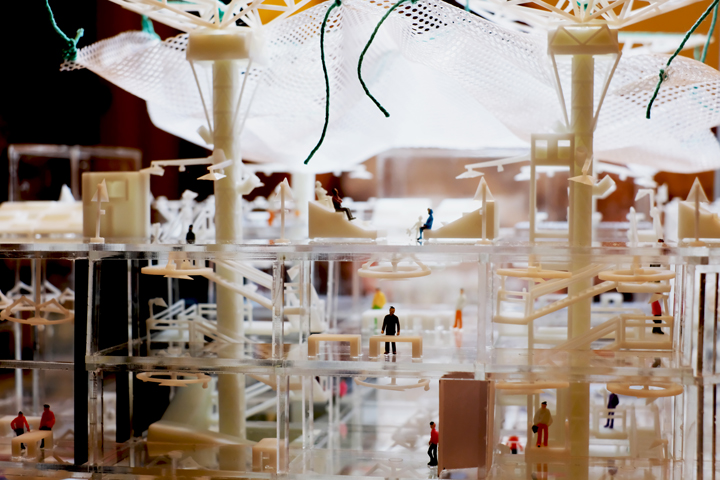
Main façade of the transformed factory showing the main working space and interactive rooftop garden
Three components drive the design of a performative and interactive space for the new experimental garment factory: a weakened visual guide for the community, sound navigation, and texture amplification. The robotic components enhance the communication and open up the Blind Factory by inviting the public to blind sew in a dark environment as a starting point of respecting the visually impaired.
Without making any design changes to the original structure of the existing garment factory, the entire ground floor is opened up like a garment market to enhance the connection with the site context. Movable furniture and booths are placed in the open plan to ensure flexibility of coordination among the blind community.
The garment making journey is driven by two main circulations in the middle, with the material contrast between the lightweight robotic structure and the original massive concrete structure. The “LIGHT” zone houses area is the preparation space (designing, cutting, and embroidering), and the “DARK” zone houses area is the production space (sewing and side-seaming). The circulation merges again on the 2/F housing, and this is where the furnishing stage of packing, and quality check takes place. Lastly, the rooftop is opened to all the public during weekends as a common area, particularly connecting with the To Kwa Wan community.
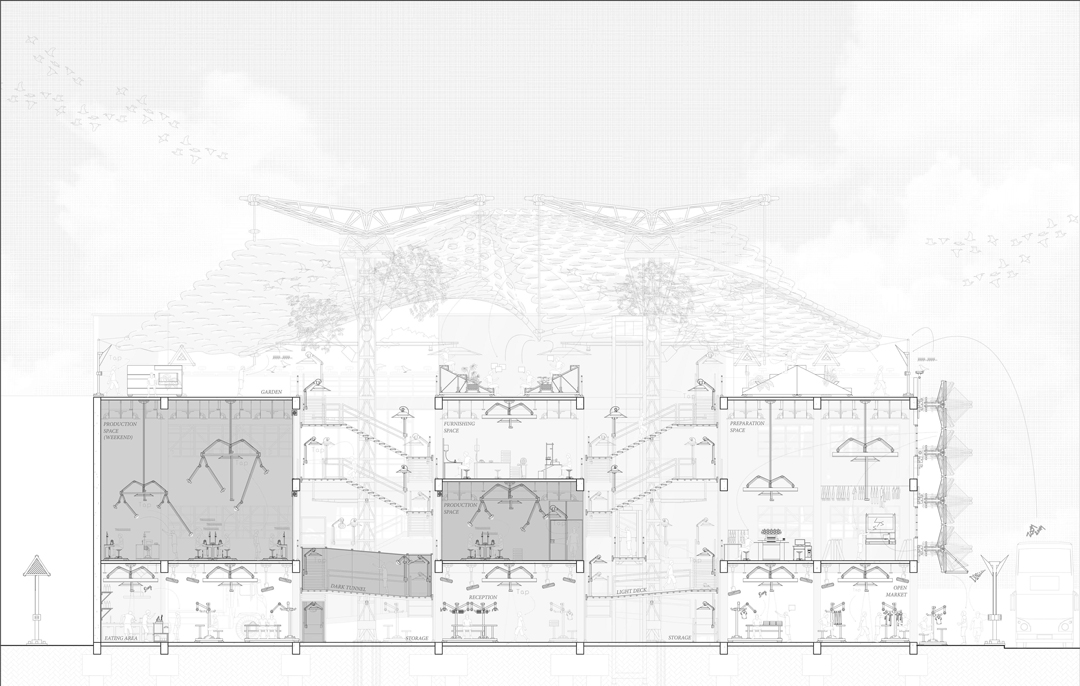
Section showing the overall interactive situation and garment production process
The robotic system emphasizes the sound, texture, and movement is embedded and become a critical part of the factory building. These robotic instruments mutated into sound posts along the streets, circulation, structure, and façade, which react, give feedback and remodify the system behavior according to the garment production environment, as well as activities and emotional states of the…more
PROJECT DATA
Project Title
Human-Machine-Environment Ecology: An experimental performance factory for the blind in To Kwa Wan
Location
To Kwa Wan, Hong Kong
Site Area
3585 square metres
Gross Floor Area
3825 square metres
Building Height
3 storeys
Post Graduate/School
Chinese University of Hong Kong
Student Name
Yeh Yi Hsin, Celia
Programme
Master of Architecture
Instructors
Yutaka Yano

 Malaysia
Malaysia Singapore
Singapore Indonesia
Indonesia Tiếng Việt
Tiếng Việt ประเทศไทย
ประเทศไทย


